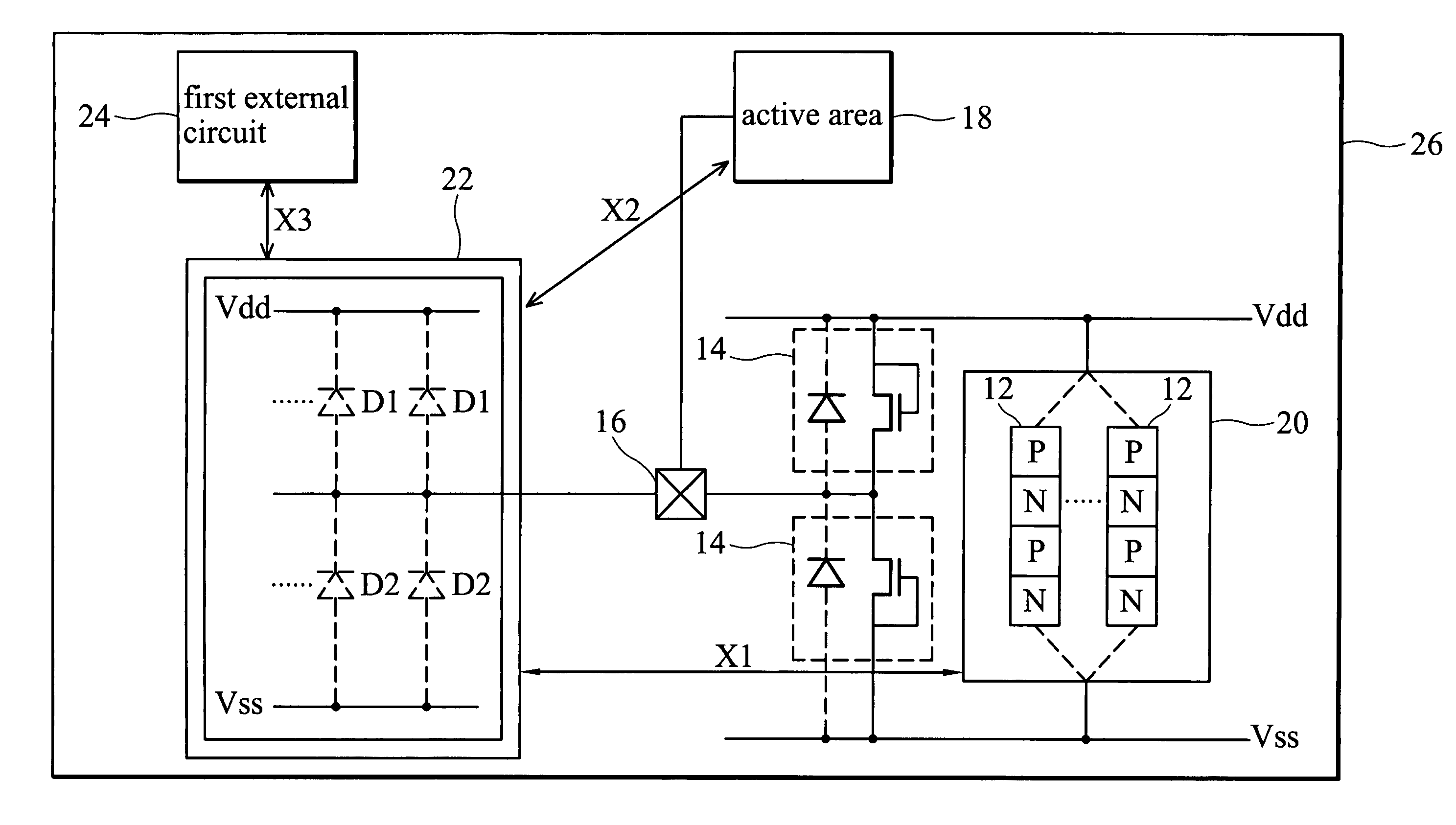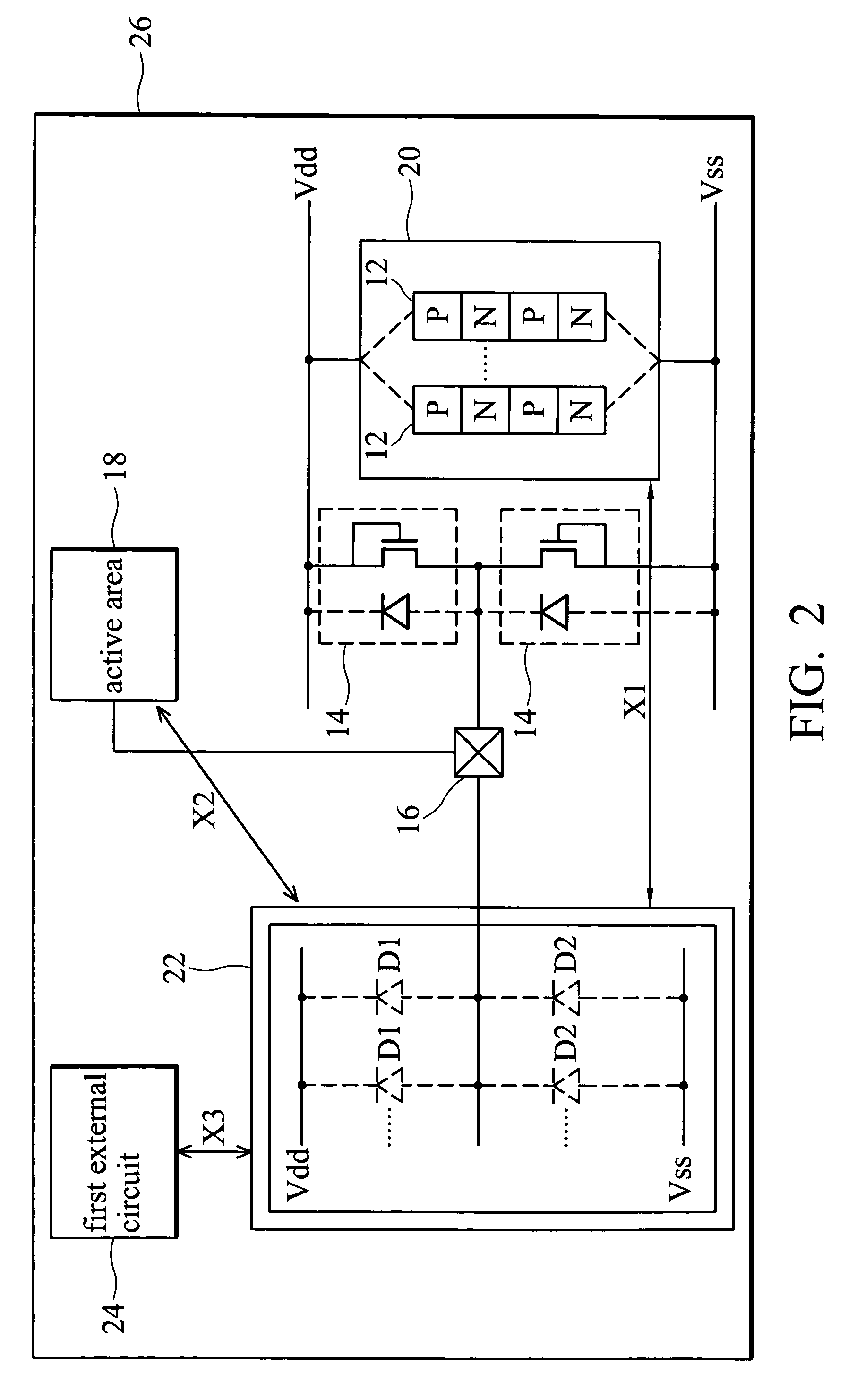Latchup prevention method for integrated circuits and device using the same
a technology of integrated circuits and latchups, applied in emergency protective circuit arrangements, transistors, etc., can solve the problems of parasitic scr inherent in the cmos process, logic errors or malfunctions of circuits, irreversible damage to ic, etc., to avoid latchup and minimize the influence of latchup trigger sources
- Summary
- Abstract
- Description
- Claims
- Application Information
AI Technical Summary
Benefits of technology
Problems solved by technology
Method used
Image
Examples
Embodiment Construction
[0017]The present invention minimizes the influence of latchup trigger source, unlike conventional methods that prevent the occurrence of latchup in a passive way. In the present invention, current shunting diodes act as additional paths for substrate current to minimize the influence of latchup trigger source without modifying the original layout of the internal circuit and the ESD protection circuit, thereby avoiding of latchup.
[0018]The latchup prevention method of the present invention is described as follows with reference to FIG. 2.
[0019]In the present invention, current shunting diodes (D1 and D2) are disposed on the substrate including an internal circuit 20, an active area 18, the first external circuit 24 and an ESD protection device 14, as shown in FIG. 2. The internal circuit 20 includes at least one parasitic SCR structure 12, and the active area 18 and the ESD protection device 14 coupled to the pad 16. Distance between the current shunting diodes (D1 and D2) and the i...
PUM
 Login to View More
Login to View More Abstract
Description
Claims
Application Information
 Login to View More
Login to View More - R&D
- Intellectual Property
- Life Sciences
- Materials
- Tech Scout
- Unparalleled Data Quality
- Higher Quality Content
- 60% Fewer Hallucinations
Browse by: Latest US Patents, China's latest patents, Technical Efficacy Thesaurus, Application Domain, Technology Topic, Popular Technical Reports.
© 2025 PatSnap. All rights reserved.Legal|Privacy policy|Modern Slavery Act Transparency Statement|Sitemap|About US| Contact US: help@patsnap.com



